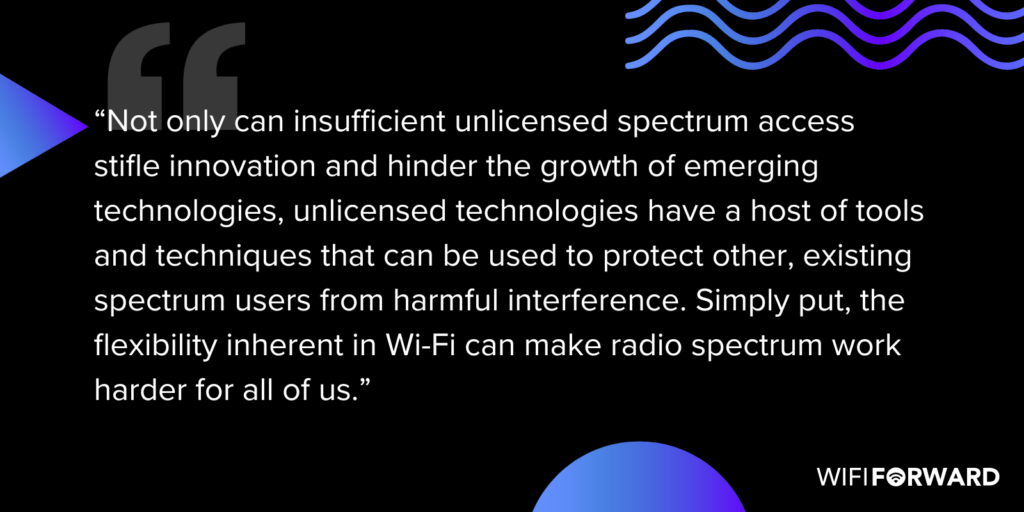The United States has long been a leader in global innovation, particularly when it comes to spectrum. With the release of the National Telecommunications and Information Administration’s (NTIA) National Spectrum Strategy (NSS) implementation plan, the U.S. has yet another opportunity to lead the world in spectrum policy – but only if NTIA embraces the types of innovation that have propelled the U.S. to global leadership.
This week, WifiForward and Spectrum for the Future led a joint letter with 15 other entities to NTIA to encourage the agency to recognize the critical role of spectrum coexistence in spectrum utilization and American innovation. Throughout the NSS process, WifiForward has urged NTIA to embrace unlicensed spectrum, which is open to anyone and everyone, allowing for innovation to flourish. More than 80,000 products are Wi-Fi certified and more than 19.5 billion WiFi devices are in use around the world.
Not only can insufficient unlicensed spectrum access stifle innovation and hinder the growth of emerging technologies, unlicensed technologies have a host of tools and techniques that can be used to protect other, existing spectrum users from harmful interference. Simply put, the flexibility inherent in Wi-Fi can make radio spectrum work harder for all of us.

Several organizations, including commercial spectrum users, public interest stakeholders, and defense companies, agreed and joined our effort to urge NTIA to adopt an aggressive implementation plan that prioritizes an examination of 7-8 GHz for unlicensed spectrum access and calls for the rapid development and adoption of innovative spectrum sharing technologies that can meet the needs of all stakeholders.
Our letter highlights the success of spectrum coexistence frameworks, citing examples such as the 6 GHz band for unlicensed use and the Citizens Broadband Radio Service in the 3.5 GHz Band for shared licensed use. These frameworks have revolutionized spectrum access and efficiency, making the U.S. a global leader in spectrum policy.
This access and efficiency is critical to maintaining competition in a free market. Licensed spectrum auctions favor legacy carriers and can lead to protracted delays in deploying technologies. For example, while Wi-Fi could use the 7 GHz band this year, the mobile industry would not be in a position to utilize the same spectrum until 2030 at the earliest. The mobile use case promises to disrupt, and even upend, vital government interests, including the armed forces, while denying consumers access to much-needed spectrum.
So, what’s next? Well, it’s up to policymakers to heed the call. By embracing unlicensed spectrum and prioritizing its access in the NSS implementation plan, we can unlock a world of possibilities for innovation and connectivity. From faster Wi-Fi speeds to groundbreaking IoT applications, the potential is limitless.
In the end, it all comes down to one simple truth: unlicensed spectrum is the key to unlocking the future of wireless connectivity. With the support of this diverse coalition of wireless leaders, we’re one step closer to making that future a reality.
